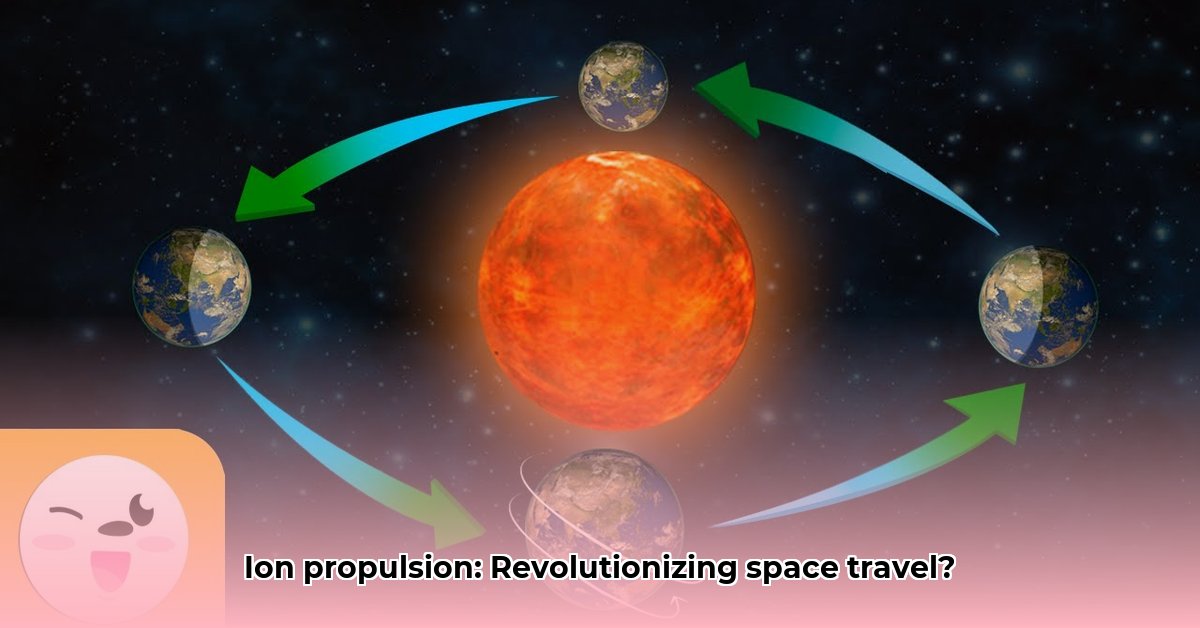Revolution Space (formerly Accion Systems) is transforming the satellite industry with its innovative, scalable ion propulsion technology. This technology represents a significant advancement for small satellites, dramatically improving their lifespan and maneuverability—critical limitations of current systems. This article delves into the core of Revolution Space’s technology, its potential to reshape the satellite landscape, and the competitive challenges it faces. By focusing on scalability, efficiency, and cutting-edge designs, Revolution Space is empowering both commercial and government entities to conduct more robust and cost-effective space missions.
The Dawn of Ion Propulsion: Extending the Reach of Small Satellites
Small satellites play an increasingly vital role in diverse applications, from Earth observation and telecommunications to scientific research. However, their limited lifespan and maneuverability have, until now, restricted their full potential. Traditional chemical propulsion systems, with their bulk, inefficiency, and limited fuel capacity, constrain mission duration and complexity. Revolution Space’s ion thrusters offer a groundbreaking solution. These engines utilize electric fields to accelerate ions, creating thrust with significantly greater fuel efficiency than chemical propellants. Data suggests that these ion thrusters can extend mission lifespans by a factor of two or three, potentially even more in certain scenarios. This dramatic improvement unlocks a vast array of new possibilities for small satellite missions, including longer operational periods, more complex orbital maneuvers, and enhanced data collection capabilities.
Fueling Innovation: Investment, Competition, and the Path to Market Dominance
Revolution Space’s recent $30 million funding round underscores significant investor confidence in its technology. This investment is crucial for scaling production and navigating a competitive landscape. Companies like Ienai Space, with their focus on electrospray thrusters, are vying for a share of this growing market. Success will hinge on factors such as cost-effectiveness, reliability, and the ability to seamlessly scale production from prototypes to mass-manufactured systems. Revolution Space’s design philosophy, centered on scalability, aims to streamline this often-challenging transition. Their long-term vision encompasses securing a substantial portion of the small satellite propulsion market, expanding into new applications, and establishing a global presence.
Ion Propulsion vs. Electrospray: A Comparative Analysis of Emerging Technologies
Revolution Space’s ion propulsion technology faces competition from alternative electric propulsion systems like electrospray thrusters. Each technology presents unique advantages and disadvantages. Ion thrusters typically generate higher thrust levels, facilitating larger orbital adjustments. Electrospray thrusters, on the other hand, excel in fine-tuned maneuvering and ultra-high fuel efficiency. This distinction positions ion propulsion as well-suited for larger satellites demanding significant orbital changes, while electrospray caters to smaller satellites requiring precise control. However, the future may lie in a hybrid approach, combining the strengths of both technologies. Integrating ion thrusters for large-scale maneuvers with electrospray thrusters for precise adjustments could offer an optimal solution for future spacecraft, maximizing both power and precision.
Transforming CubeSats and Enabling Formation Flying: The Impact of Revolution Space’s Technology
Revolution Space’s technology holds particularly transformative implications for CubeSats, the miniature satellites increasingly used for research, education, and commercial applications. The enhanced efficiency and reduced weight of ion propulsion can dramatically expand the capabilities of these small, cost-effective platforms. Imagine CubeSats capable of extended missions, intricate maneuvers, and robust data collection—a revolution in space exploration and research. Moreover, the precise maneuvering enabled by ion thrusters is ideally suited for formation flying missions, where multiple satellites operate in coordinated clusters. This collaborative approach enables sophisticated observations and data gathering, opening up new frontiers in Earth observation, space science, and beyond. Formation flying, facilitated by technologies like Revolution Space’s ion propulsion, is poised to become an increasingly integral part of future space missions.
Charting the Course Ahead: Navigating Challenges and Seizing Opportunities
While Revolution Space’s technology offers immense potential, several key challenges must be addressed. Rigorous testing and validation are essential to ensure long-term reliability in the harsh environment of space. Integrating ion propulsion into existing satellite architectures requires overcoming technical hurdles. Furthermore, upgrading ground control systems to manage the complexities of ion propulsion is a critical factor for successful implementation. Collaboration between industry stakeholders, government agencies, and research institutions will be essential to navigate these challenges and unlock the full potential of this disruptive technology. Revolution Space’s advancements in ion propulsion are not merely incremental improvements; they represent a paradigm shift in satellite propulsion, promising to redefine the boundaries of space exploration and utilization. The future of satellite technology, and indeed the future of space itself, may depend on the successful development and deployment of innovations like those pioneered by Revolution Space.
- Revolution Space: Disruptive Ion Propulsion Transforming Satellites - April 24, 2025
- Race Through Space: Fun Family Game for Kids - April 24, 2025
- Unlocking the Universe: reading about stars 6th grade Guide - April 24, 2025
















